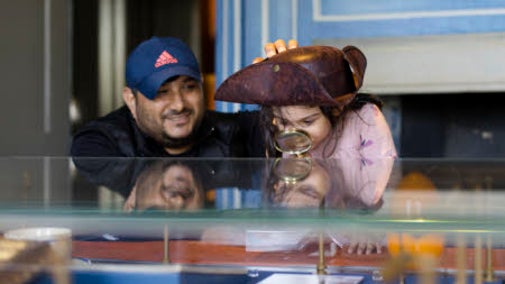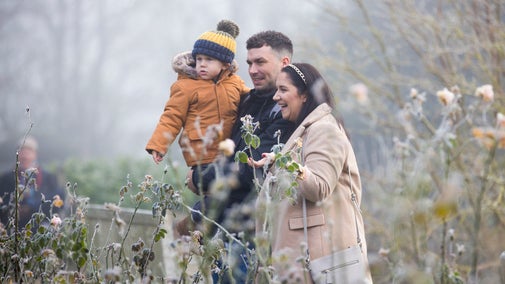The second major exhibition told the story of the era when the building was requisitioned and operated as a day nursery for local children between 1943–1954.
The exhibition was based on the memories of seven former nursery attendees: Roger, Linda, Joe, John, Janice, Diane and Pat. Visitors were able to discover tales of childhood and daily life at the nursery, from playtime, to snacks and afternoon naps. For the first time, Rainham Hall was a public, communal building and the grand front door opened each morning to the youngest members of the community. In the daytime it was filled with the chatter and clatter of little children and their carers but closed and silent at night.
Visitors were able to immerse themselves in the era through a variety of exhibits and displays, including audio visual installations, objects on display, artworks by local makers, historic photographs, and oral history excerpts.
Did you attend the day nursery at Rainham Hall?
Perhaps you remember attending as a child, have photos from your nursery days at hall or even kept a memento from the nursery such as your favourite toy? Maybe you know someone who attended or worked at the day nursery?
The team at Rainham Hall have spoken to just a handful of former nursery children so far, but the intake was as large as 45 children at one time and hope many more will come forward. Former nursery attendees and employees are invited to re-visit the hall after nearly 50 years, to help bring to life a lively era in the building’s history.
The oral history team are always interested to hear from those with memories of the hall. Please get in touch at rainhamhall@nationaltrust.org.uk.
Conservation cleaning
In January each year important conservation work is carried out, to ensure the hall is preserved for future generations. Original floorboards are cleaned and waxed to ensure they are in the best shape for the year ahead.
First the floors are vacuumed, mopped and left to dry. Once dry, the first coat of wax is worked into each board by hand, and this is left overnight. The next day, once dry, the floor is buffed and then a second layer of wax applied onto the boards and left to dry. The waxed boards are given a final buff the following day. Waxing the floors protects them from footfall and any accidental spills.
The beginning of the year is also the time when the hall is given a deeper clean. The hard-to-reach places are dusted, and Christmas decorations removed. Caring for the hall is an ongoing job. Each week surfaces are dusted, floors vacuumed, and the staircase banister dusted.









